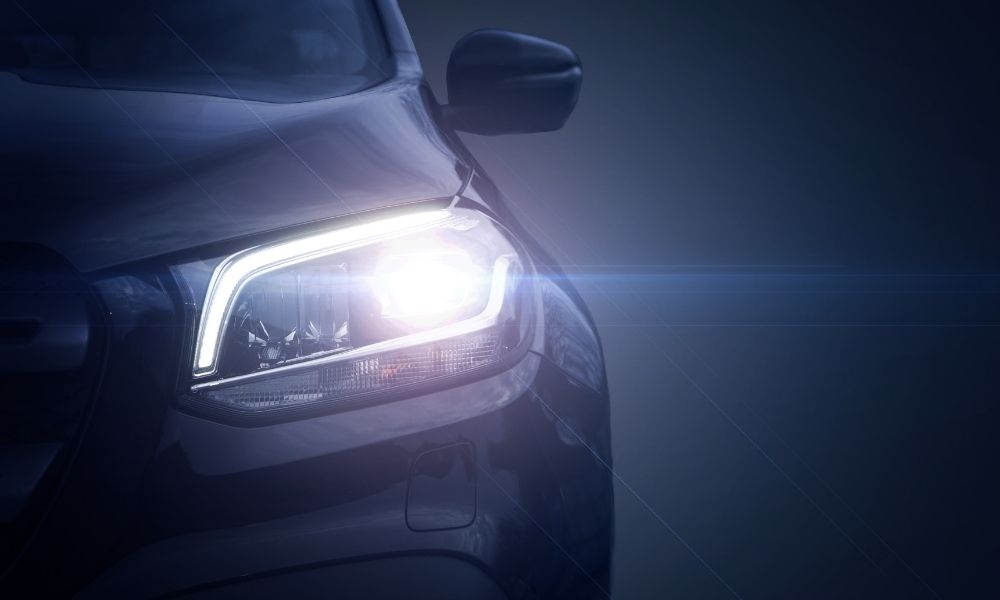Imagine a light system capable of projecting images and symbols onto the road to alert drivers of construction zones or other hazards. Such technology exists – adaptive headlights do this – though until regulations catch up it’s only available as an expensive aftermarket modification.
LED lights respond immediately to system commands and use only a fraction of the energy required by traditional bulbs, increasing visibility while decreasing risks from rear-end collisions.
Halogen Bulbs
Lighting technology in automotive design is an important differentiator, often used to brand their vehicles and distinguish their manufacturer. While traditional bulbs such as halogens are still prevalent, high-end vehicles have increasingly integrated HID (high-intensity discharge) lights into their designs for years, and will eventually filter down to more affordable models. HID lights do not use filaments and instead emit light via an arc within each bulb using mixtures of xenon gas that reduce warm-up time; to ignite these HID lights requires very high voltage electronic generated electronically then transmitted over an IGBT bridge – something traditional bulbs like halogens cannot do.
Halogen bulbs offer an efficient combination of efficiency and power density that make them the go-to choice for headlights, though sales have recently decreased due to increasing competition from LEDs. Still, adaptive lighting technologies that respond to driving conditions as well as smart solutions integrating vehicular networks to deliver information are creating significant opportunities in this sector.
HID (Xenon) Lights
HID bulbs offer a brighter alternative to halogen bulbs in terms of heat production, producing a natural, brighter white light that more closely replicates daylight than halogen bulbs do. But be wary – some “xenon bulbs” sold on the market are actually just modified halogen bulbs with some extra white-light producing gases added; to ensure you purchase genuine xenon bulbs check for fittings that start with “D”.
Xenon headlights are much more effective than standard halogen ones in providing you with greater visibility to detect pedestrians, hazards and other road obstacles which are usually lost behind yellowish-tinged standard headlights. Their superior brightness also makes navigating rough terrain or sharp bends in the road much simpler without risk of losing control.
LEDs
While transformational innovations like automation and electrification typically capture most of the spotlight in automotive technology, lighting technology is also making great strides forward. LEDs, laser-powered headlights, OLED panels and adaptive lights are just a few examples of new ways that light is being utilized both inside and outside cars.
LEDs offer another advantage over their predecessors by using less electricity. Furthermore, their cooler running temperatures means less of an impactful drain on your battery’s resources.
Automotive lighting sales channels can be broken down into two main sales channels: OEMs and aftermarket. OEMs hold most of the market share and are leading innovation efforts with regards to lighting technologies, meeting consumer expectations for improved safety and enhanced performance. On the other hand, aftermarket retailers focus more on aesthetics and customization thanks to flexible LED technologies.
Adaptive LED Headlights
As the lighting industry develops, car manufacturers are adopting cutting-edge technologies that not only increase safety and visibility on the road but also add style. LED lighting has become more than just illumination; it can display information, alert drivers to potential hazards, communicate with other motorists on the road and more!
Luxury vehicles now employ adaptive headlight technology which utilizes LED matrix lights to illuminate the road without blinding other drivers on its high beam setting. By responding to your vehicle speed and steering input, adaptive headlight technology can direct low beam headlights towards where your turning, mitigating driver fatigue while increasing safety at night by giving drivers a clear field of vision.
Digitized lighting technology could open up new design opportunities for vehicle exteriors. This dynamic technology allows for animated displays that warn drivers to check their mirrors prior to merging or inform other motorists what your turn signal is doing.

